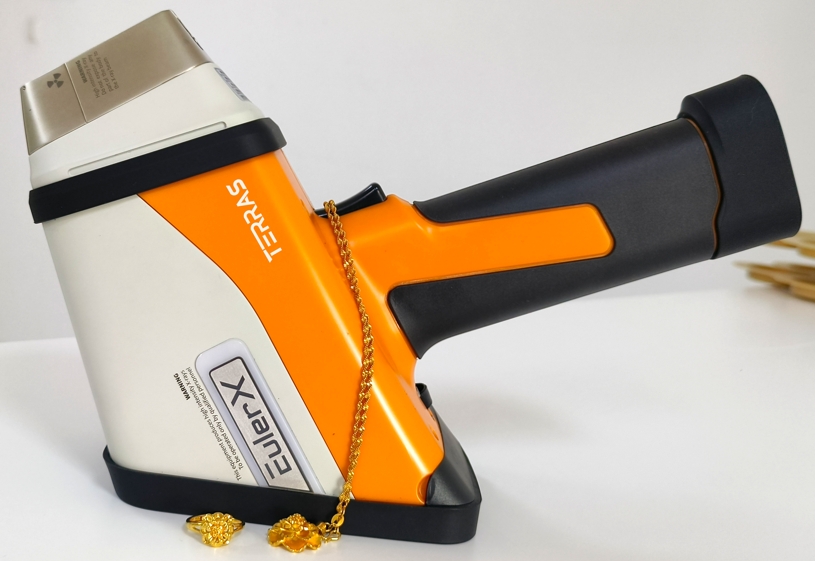
Gold and Jewelry
A high-tech enterprise focusing on the development and application of X-ray technology products, committed to becoming a leading supplier of X-ray industrial testing solutions.
The XRF Science Behind Silver Coin Testers: How Do They Work?
In the world of precious metals, silver coins are highly valued not just for their intrinsic worth, but also for their historical significance and rarity. Whether you’re a collector, investor, or simply a curious buyer, one of the most important aspects of dealing with silver coins is ensuring their authenticity. Counterfeit coins, unfortunately, are a common problem in the market. This is where modern technology, particularly X-ray fluorescence (XRF), comes into play. But how exactly does XRF work in testing silver coins? In this article, we’ll explore the science behind XRF and how it's used in silver coin testers to help determine the authenticity of silver.

Terras Handheld XRF EulerX900 Precious Metal Analyzer
What is XRF (X-ray Fluorescence)?
X-ray fluorescence is a non-destructive analytical technique used to determine the elemental composition of materials. In simple terms, it involves bombarding a sample with high-energy X-rays. These X-rays cause the atoms within the material to emit secondary (or fluorescent) X-rays, which can then be measured to identify the elements present and their concentrations.
How Does XRF Work in Silver Coin Testers?
Silver coin testers that use XRF technology are designed to quickly and accurately analyze the composition of a coin. Here's a step-by-step breakdown of how the process works:
Emission of Fluorescent X-rays:
As the X-rays hit the coin, the atoms of the metals within the coin (including silver and any other metals that may be alloyed with it, such as copper or nickel) become excited. This excitation causes the atoms to release secondary X-rays, called fluorescence, at characteristic wavelengths unique to each element.
Detection of Fluorescent X-rays:
The XRF tester then detects the emitted fluorescent X-rays and analyzes their wavelengths. Each element has a distinct "signature" wavelength, allowing the device to identify which elements are present in the coin and in what quantities.
Analysis of Results:
The XRF tester processes the detected wavelengths and generates a detailed report showing the elemental composition of the coin. This report indicates the percentage of silver (Ag) and any other metals that might be present, such as copper (Cu), zinc (Zn), or gold (Au), depending on the coin’s specific alloy.
Verification of Authenticity:
Once the coin’s composition is known, the tester can compare it against the expected composition for that particular type of coin. For example, most genuine silver coins, like the American Silver Eagle or the Canadian Silver Maple Leaf, typically contain 99.9% pure silver (or .999 silver). If the tester finds that the coin contains less silver or unusual elements that shouldn't be present, it could be an indication that the coin is a counterfeit or a poor-quality replica.
Advantages of Using XRF for Silver Coin Testing
Non-destructive Testing:
XRF is a non-invasive technique, which means the coin remains intact and undamaged. This is particularly important for collectors or investors who want to preserve the value and condition of their silver coins.
Quick and Accurate Results:
XRF testing is fast, often providing results in just a few minutes. This allows coin dealers, collectors, and buyers to quickly assess whether a coin is genuine or if further investigation is needed.
Ability to Test Coins in Various Conditions:
XRF can test coins regardless of their condition, whether they are tarnished, worn, or even partially corroded. Unlike traditional methods that may require physical changes to the coin (e.g., melting or cutting), XRF requires no alteration to the sample.

Terras Handheld XRF EulerX900 Precious Metal Analyzer
Detailed Composition Information:
XRF analysis provides more than just a simple “silver or not” answer. It gives a detailed breakdown of the elemental composition, which can help detect fake coins that might appear to be silver but are actually made from cheaper metals like lead, brass, or other alloys.
The EulerX 990 is a cutting-edge handheld gold analyzer equipped with a ceramic packaged microfocus X-ray tube and a high-performance semiconductor detector. Utilizing advanced software algorithms, it can perform quick, accurate, and non-destructive testing of gold, silver, platinum, and other precious metals in jewelry, enabling the rapid identification of their purity. This makes the EulerX 990 an essential tool for assessing the quality of jewelry, investment gold, and other precious metal commodities.
Conclusion
XRF technology is revolutionizing the way silver coins are tested for authenticity. By providing quick, accurate, and non-destructive results, XRF analyzers help prevent the circulation of counterfeit silver coins, giving both collectors and investors peace of mind. While it’s not without its limitations, XRF remains an invaluable tool for anyone looking to ensure the authenticity and value of their silver coins. Whether you’re a seasoned numismatist or just a casual collector, XRF testers are an indispensable tool in the fight against fraud in the world of precious metals.
Join Us
Subscribe to our email list for updates & promotions.



